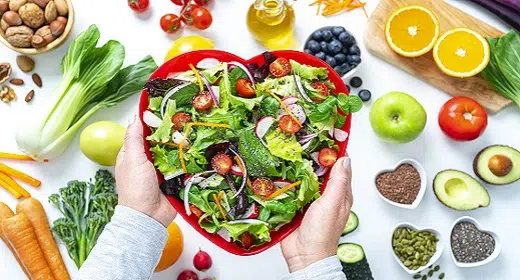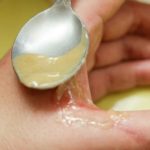by Ocean Robbins: Humans have long believed weird and untrue things about food…
We are proud to announce a new partnership with John and Ocean Robbins and the Food Revolution to bring our readers Summits, Seminars and Masterclasses on health, nutrition and Earth-Conscious living.
Sign Up Today For the Healthy Brain Masterclass
When Europeans first encountered tomatoes, many believed they were poisonous. The British Royal Air Force Air Command during World War II spread the rumor that carrots magically allow you to see in the dark in order to explain their nighttime successes without revealing the truth about their new radar navigation system. And, as we discovered in 1969, the moon is not in fact made of cheese.
While we’ve come a long way, there are still food myths that persist in the popular imagination, despite having been soundly debunked. In this article, we’ll look at five vegan myths that keep people from adopting plant-based diets, or keep them from succeeding when they do.
The Rise of Plant-Based and Vegan Diets
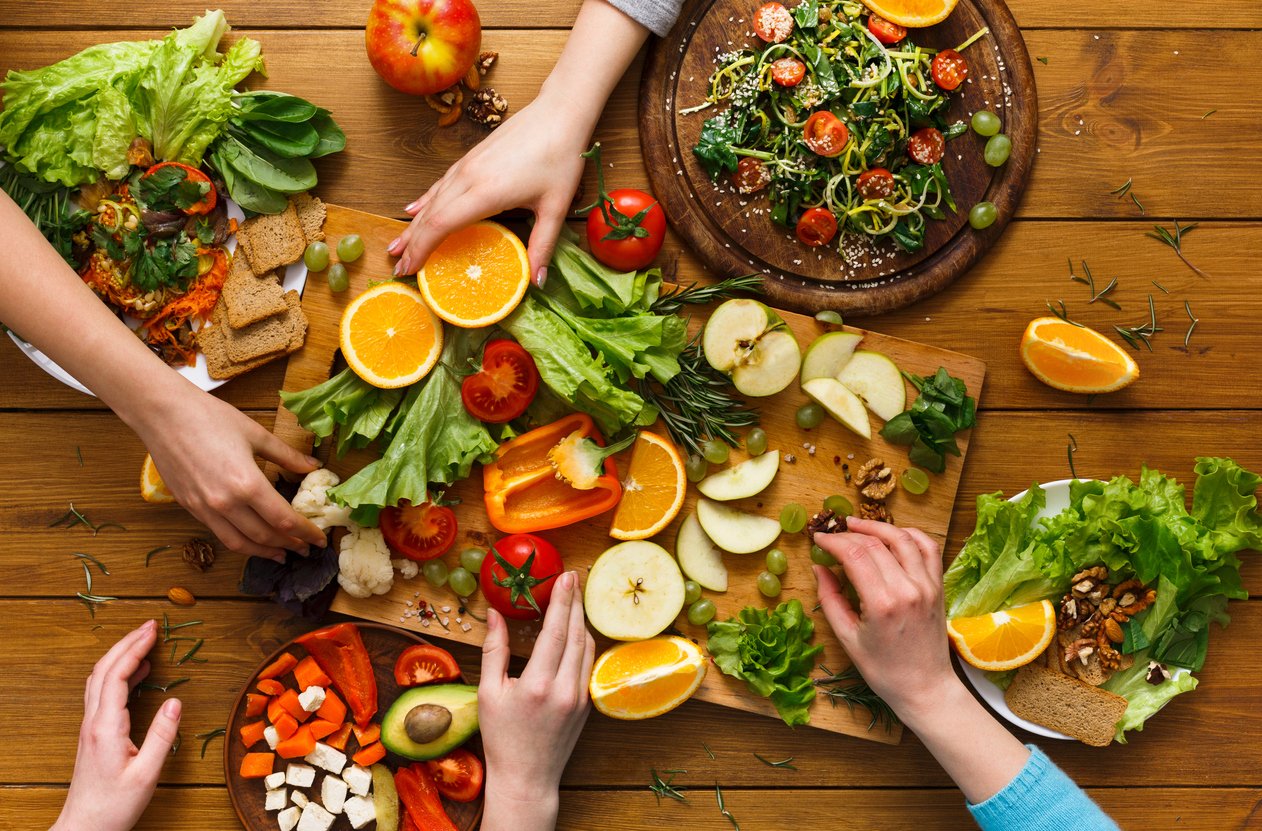
More and more people are going plant-based and vegan every year, swapping out animal products for plant-based options. New and existing brands are debuting plant-based alternatives to meat, dairy, and even eggs — and curious consumers are eating them up, literally.
There’s plenty of evidence that plant-based diets offer myriad benefits to your energy, mood, physical appearance, and overall health. Not just from dry scientific papers, either — many beloved celebrities credit veganism for their well-being and happiness and aren’t afraid to share their views with their fans.
Yet despite all this progress and positive press, veganism and plant-based eating have yet to reach mainstream acceptance. A lot of people really like the taste of meat and don’t want to give it up. Cultural and family traditions may call for ingredients that vegans don’t consume. And many people may not know how easy it can be to create healthy, plant-based versions. Maybe someone tried a soy burger from the 1980s and is still trying to get the taste out of their mouth.
Many people would probably try out a vegan or plant-based diet happily except for a few still-pervasive myths. These myths about veganism are spread by word of mouth, shared online, and in books, often with the help of misinformation campaigns funded by industries that stand to lose market share if more people give up meat, eggs, and dairy. And these food myths can keep folks from making the switch to a plant-based diet, or scare them into giving up before they experience the benefits for themselves.
Before I get to the top myths about going plant-based or vegan and uncover the truths about this way of living, let’s just remind ourselves of the truth — that going vegan can be good for your health, the environment, and the animals whose lives depend on our mercy.
Benefits of a Vegan Diet
Going Vegan for Health
First, a plant-based diet, followed correctly, provides many health benefits. Studies show that vegans typically enjoy a lower risk of chronic disease, healthier weight, and a longer life expectancy than omnivores. And the benefits are much greater when the diet is not just vegan, but whole foods, plant-based (minimizing processed foods like white flour, sugar, and certain oils, and eating lots of fruits and vegetables, whole grains, nuts, seeds, and legumes).
Among the conditions that are preventable or treatable with a whole foods, plant-based diet are cardiovascular disease, type 2 diabetes, and Alzheimer’s disease, as well as some cancers, autoimmune diseases, and digestive ailments. The legendary Blue Zones, communities in which astounding percentages of the population live unimpaired into their 90s and even 100s, also all feature predominantly plant-based diets.
Going Vegan for the Environment
Second, a plant-based or whole food vegan diet is good for the environment. By choosing to eat low on the food chain, you can decrease your food-related carbon footprint and thereby reduce your contribution to greenhouse gas emissions and global climate chaos. Because producing calories from plants is vastly more efficient than getting them from animals, plant-based agriculture uses much less water, land, and chemical inputs overall, and results in far less pollution.
Over one-quarter of all ice-free land on the planet is used for animal agriculture. Much of that land is former forestland, converted to pasture or grain fields to feed cattle. Agricultural runoff directly tied to animal farming has created massive dead zones in the world’s oceans. Increased levels of CO2 and higher temperatures in these waters result in more greenhouse gas buildup in the atmosphere and also contribute to mass die-offs of marine species. You can choose not to contribute to these calamities by eating plants instead of animals.
Going Vegan for Animals (& Humans)
Third, going plant-based gives you the ability to opt-out of the industrial animal farming system, in which billions of sentient beings are kept in conditions that deny them their instincts and their lives. Historian Yuval Noah Harari has called the mass suffering inflicted on these creatures by industrial animal agriculture “one of the worst crimes in history.”
And even if you aren’t an animal lover, a visit to a feedlot, industrial chicken coop, or slaughterhouse will quickly show you that the humans who labor in the factory farm system are also victims. From exposure to dangerous pathogens to repetitive strain injuries to industrial accidents, slaughterhouse and factory farm workers (who are typically from marginalized communities, often undocumented, poorly paid, and with few options available to them) get sick and injured at shocking rates.
By shifting your diet away from animals and toward plants, you vote with your dollars for a kinder, more ethical world for livestock animals and your fellow humans.
Top 5 Vegan Diet Myths
Even with all those reasons to adopt a plant-based or vegan diet, you may still find yourself wondering if it’s a good idea based on things you’ve heard. Things like, “You’ll become protein deficient,” or “If veganism was healthy, you wouldn’t need to supplement,” or “Soy milk and tofu are full of estrogen.” So let’s examine the top five vegan myths, and see what the evidence shows.
1. You can’t get enough protein on a vegan diet
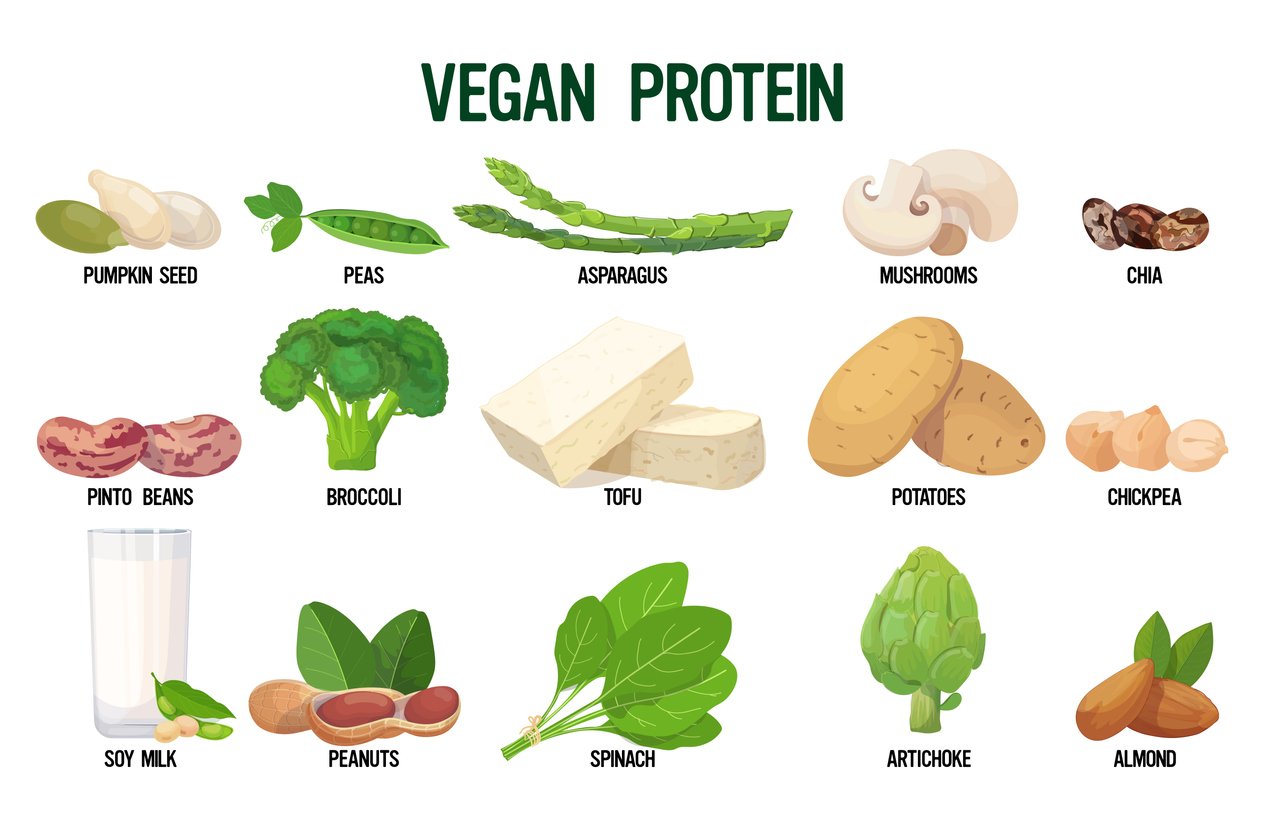
The truth is that most people in the industrialized world consume more protein than they need. It’s actually pretty hard to design a diet that’s protein deficient as long as you’re eating real food and getting enough calories overall.
Also, eating too much protein isn’t harmless. While your body is able to store carbohydrates and fats for later use, you have no mechanism to store excess protein. Your kidneys have to process whatever protein you don’t need for repair, replacement, or growth. Research shows that longtime adherence to a high-protein diet can damage your kidneys. But not all protein, actually. Protein from animal sources can lead to chronic kidney disease, while protein from plants appears benign.
This directly contradicts the main protein myth, that you need to eat animals in order to get enough protein. The myth comes in two flavors. One is that animals contain sufficient protein and plants do not. The other is that while plants do have protein, it’s either incomplete or of inferior quality compared to animal protein.
So what does the evidence say about either of those claims? You guessed it — they’re totally incorrect.
Protein Needs
First, how much protein do we need? That’s a complicated question to answer for an individual, depending on lifestyle, activity levels, sex, age, health status, and more. Children and those over 60 years old need more, as do athletes and pregnant or breastfeeding people.
But on average, the recommended dietary allowance (RDA) for protein is 0.8g per 1 kg of body weight (at least in the US). If you aren’t into the metric system, you can find your daily RDA in grams by multiplying your weight in pounds by 0.36 if your requirements are low, and up to 0.45 if you have a very demanding lifestyle. For example, a mostly sedentary 160-pound man should aim for roughly 57g of protein per day.
And the RDA isn’t an average number, either. It’s calculated to provide enough protein for 97.5% of the population, which means that for many people, it’s significantly more than they need.
All plants, as well as mushrooms, contain protein. Here’s how many grams per half cup of some common plant foods:
- Firm tofu (from soybeans): 10 g
- Lentils, cooked: 8.9 g
- Spaghetti: 4 g
- Spinach, cooked: 2.7 g
- Broccoli, cooked: 2 g
- Banana: 1.3 g
- Potato, baked: 1.2 g
Those numbers may seem low compared to similar-sized portions of meat, but these plant foods are also very low in calories. If all you eat in a day is half a cup of each of those 7 foods, for example, you’ll end up getting 30g of protein in just 518 calories. If you aim to consume 2,000 calories per day of similar quality, you’ll be in the neighborhood of 120g of protein, which is way more than most people need.
Protein Quality
Second, what about protein quality?
The incomplete protein myth (which argued you have to pair certain plant foods together at the same meal to prevent amino acid deficits — for example, beans and rice) has been thoroughly debunked.
There are nine essential amino acids, ones our bodies can’t metabolize and therefore must get through food. And every plant food contains all nine amino acids — no combining required.
It’s true that some plants are lower than others in certain amino acids. The most common limiting amino acids in plant foods include methionine, lysine, and tryptophan. For instance, some cereals and legumes have only small concentrations of lysine. Soy foods, on the other hand, are a good source of lysine.
The answer isn’t to make sure you consume tofu and rice on the same plate; your body doesn’t work according to such an urgent timetable. Instead, all you have to do to get all the essential amino acids is to eat a balanced diet that incorporates a variety of types of plant foods. Your body takes care of the rest.
Plant-Based Protein Sources
Some of the best sources of protein on a plant-based diet include:
- Soy: tofu, tempeh, edamame
- Beans
- Peas
- Lentils
- Quinoa, amaranth, and oats
- Nuts and seeds
- Green vegetables
So what does getting enough protein on a plant-based diet look like in everyday life? Here’s an example daily plant-based menu with protein content:
Breakfast: Omega Baked Oatmeal – 12g of protein
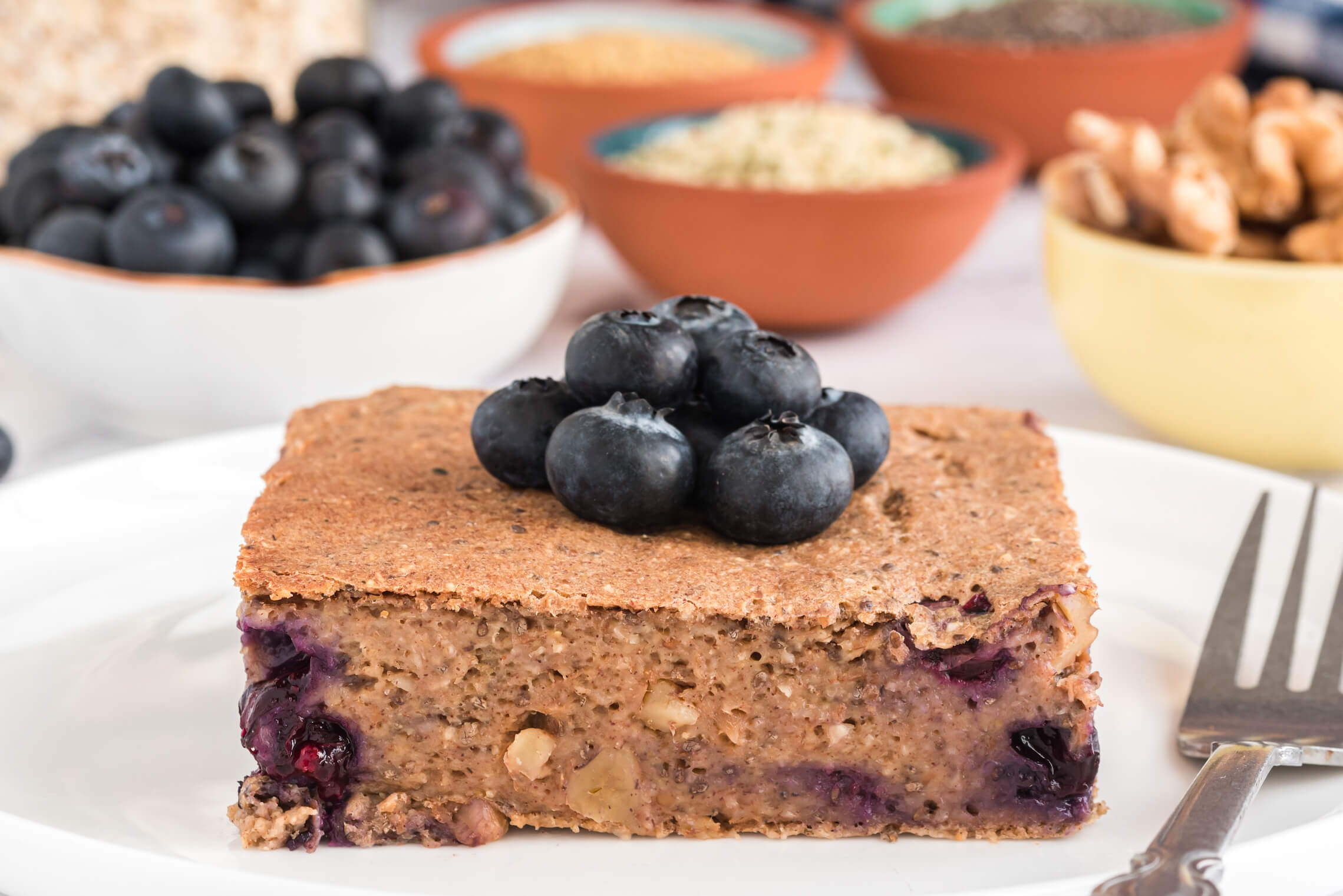
Snack: Morning Motivator Spiced Shake – 16g of protein
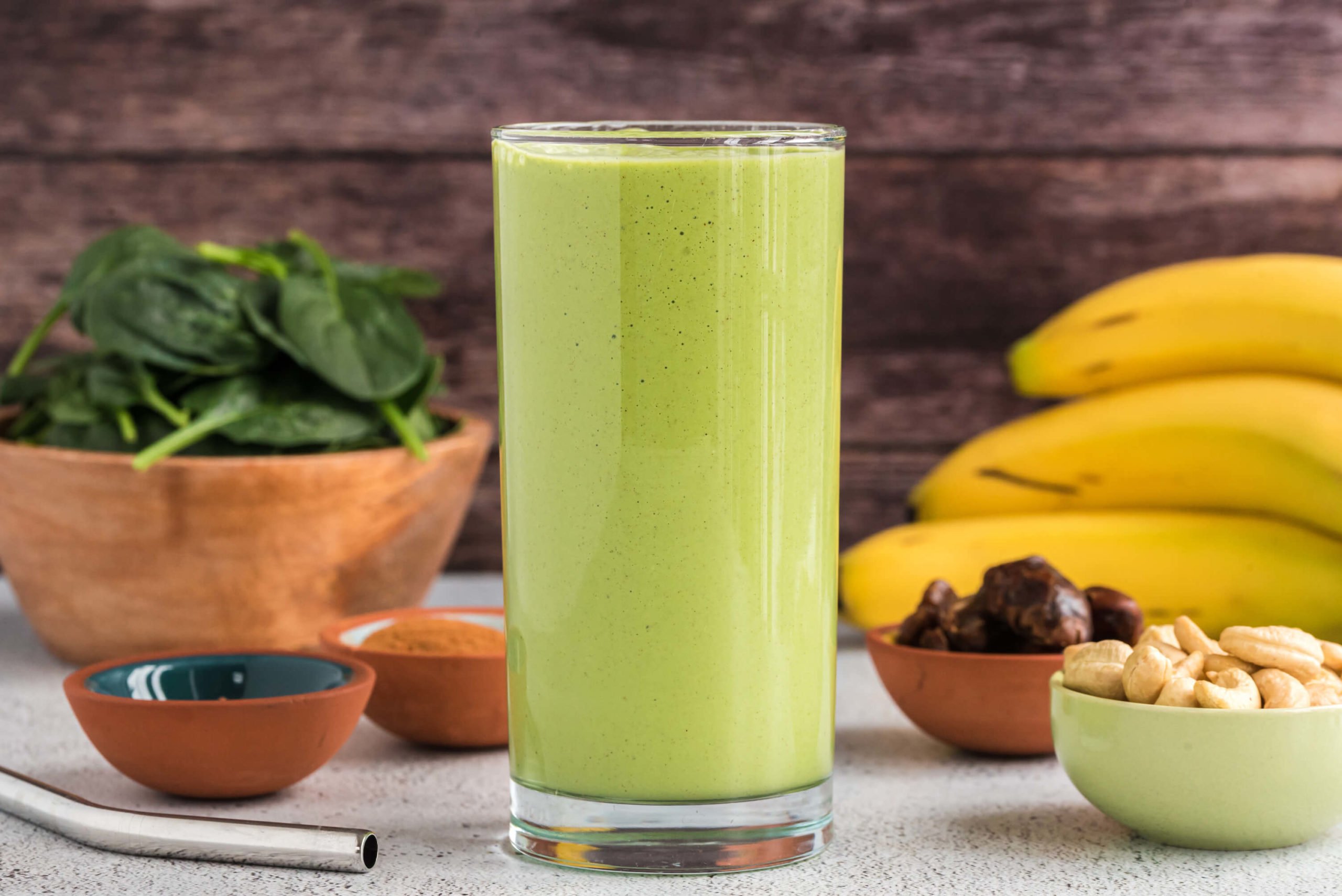
Lunch: Chickpea Quinoa Salad – 18g of protein
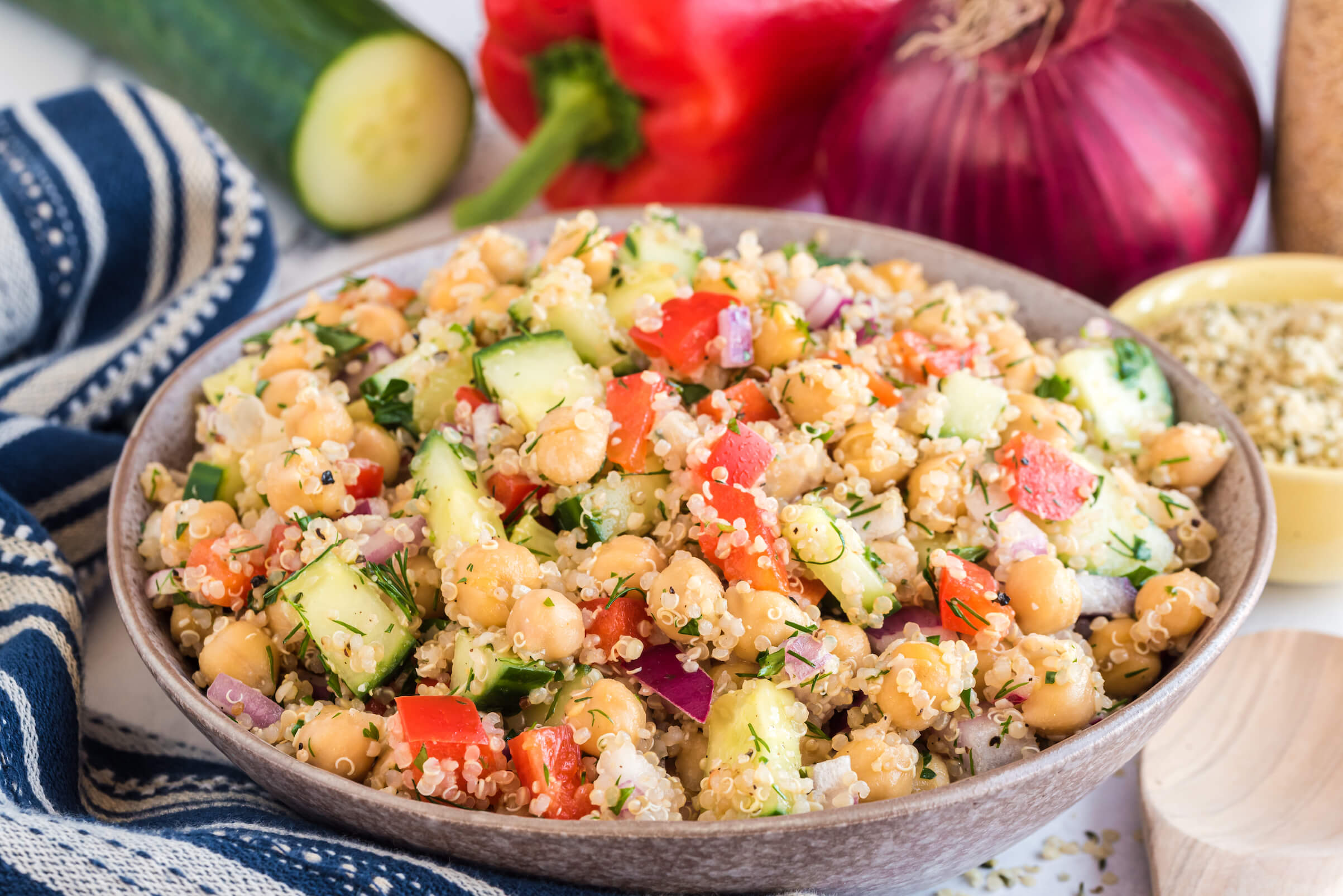
Snack: Puffed Millet and Peanut Butter Bars – 12g of protein
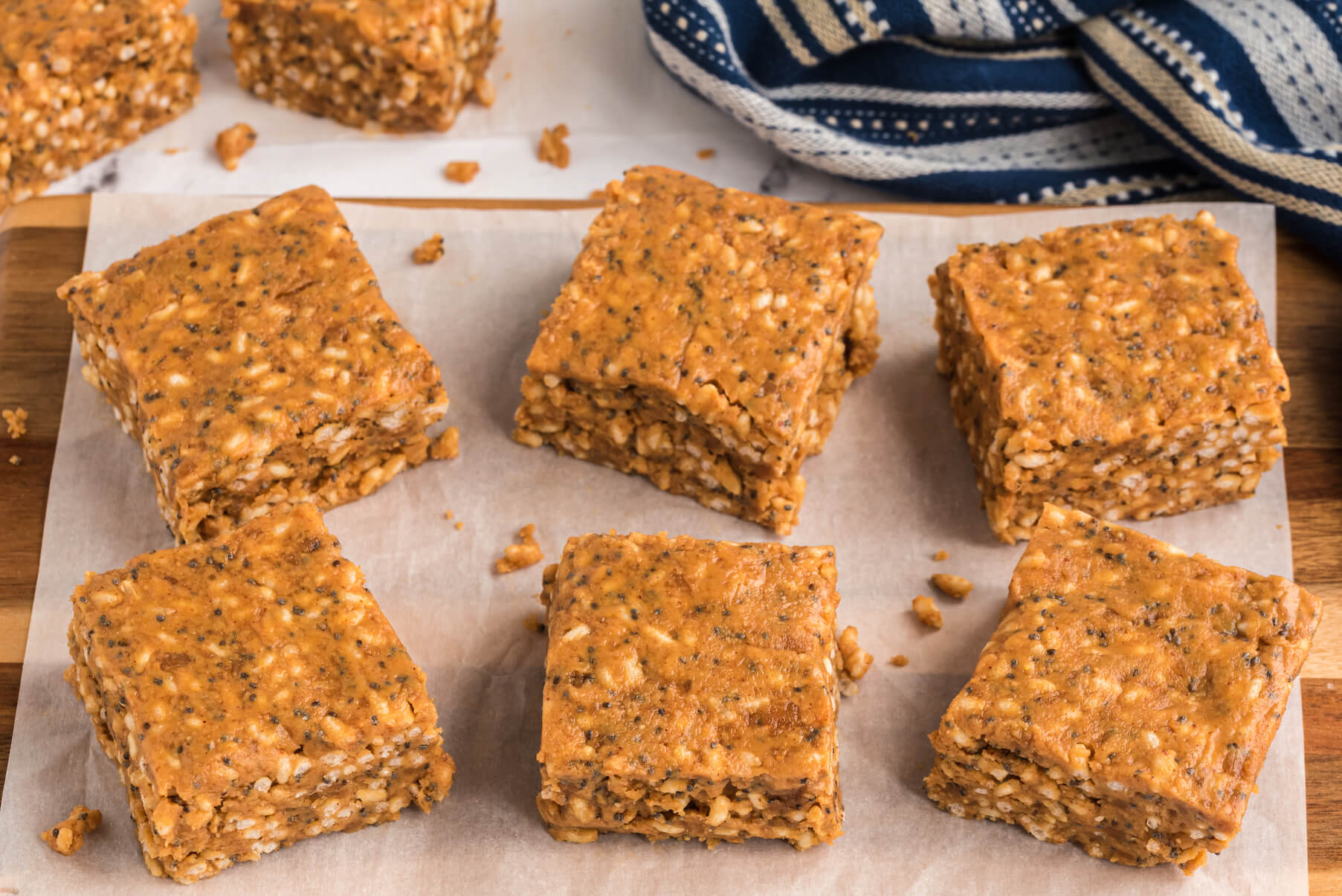
Dinner: Sweet Chili Broccoli and Tofu – 27g of protein
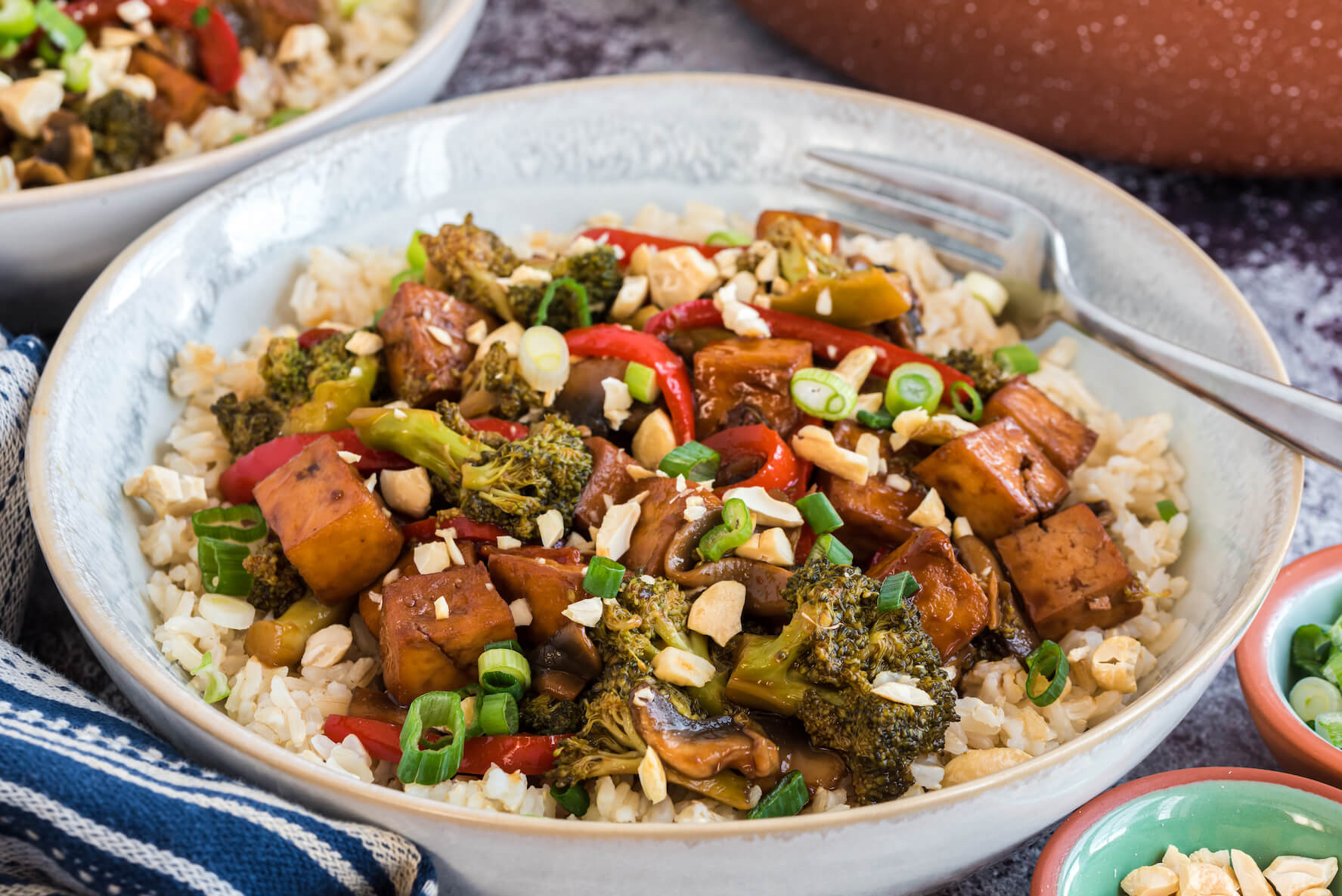
Snack: Sunflower Butter Banana Toast – 9g of protein
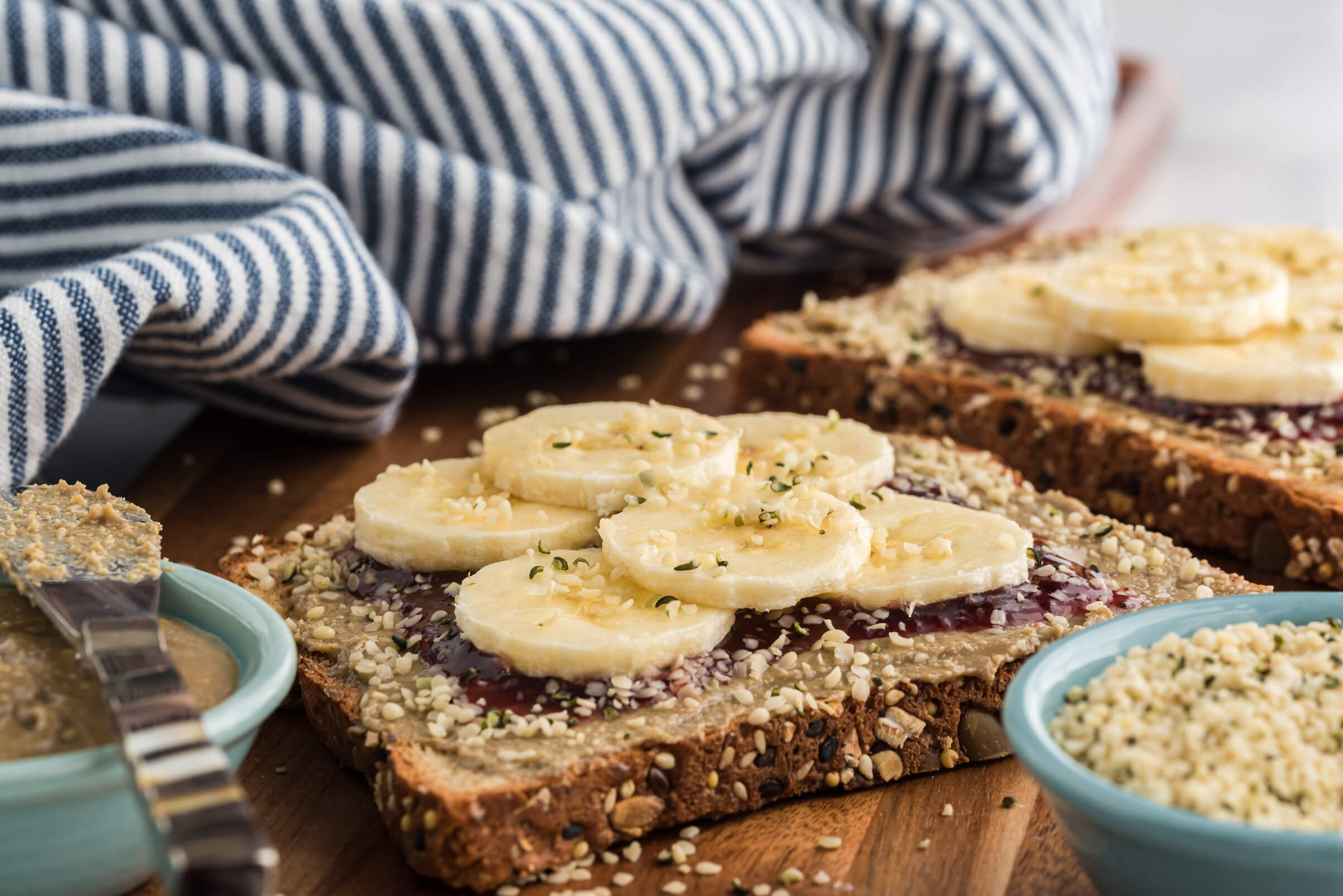
(For more on plant-based protein, see our article here.)
2. You don’t need to take ANY vegan diet supplements (or, needing to supplement proves that a plant-based diet is nutritionally deficient).
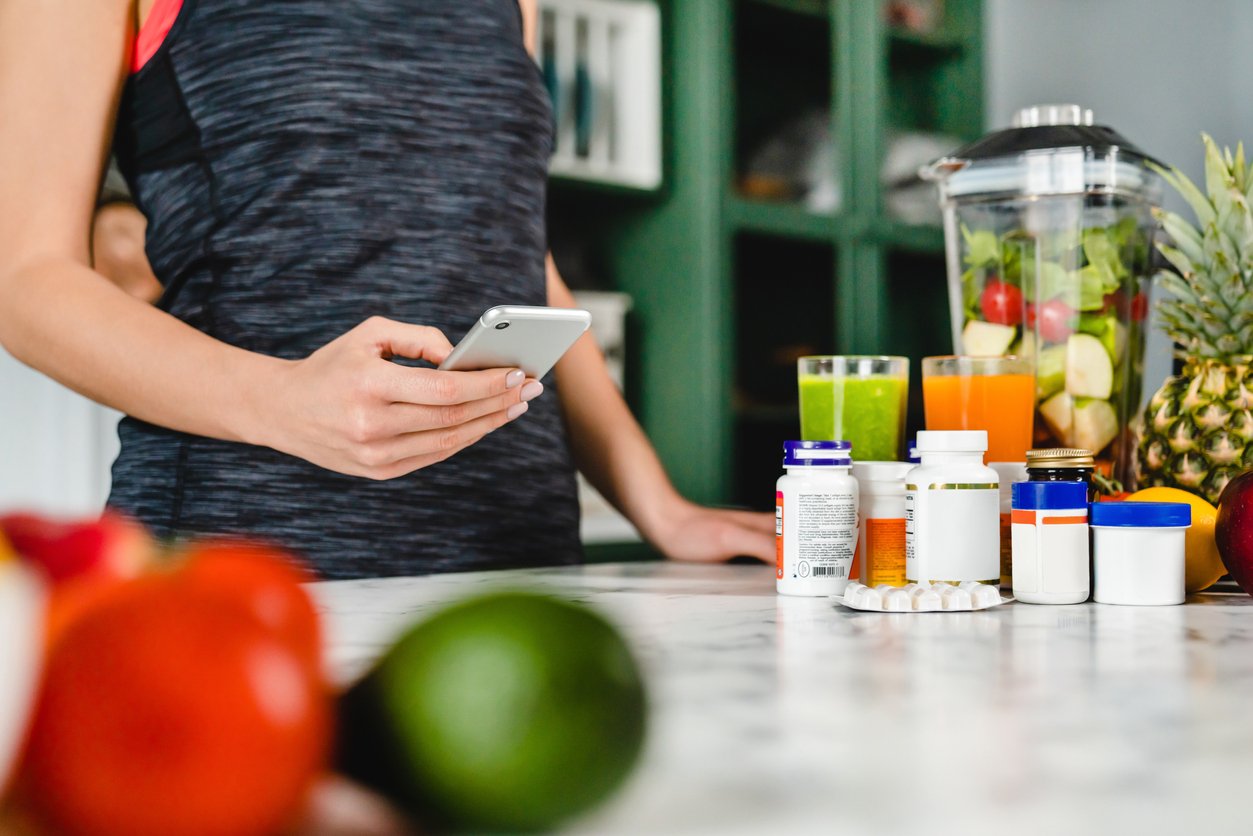
This myth about veganism is based on the misconception that needing to supplement means your diet isn’t healthy. It negatively affects two groups: people who don’t go plant-based because they’re convinced that it’s a nutrient-deficient way of eating, and vegans who insist that their diet is perfect and refuse to supplement.
People who believe that vegans must take lots of supplements to make up for their “deficient” diet also tend to believe the myth that vegans are weak and scrawny. But one only needs to glance at the long list of successful vegan and plant-based athletes and bodybuilders — both male and female to bust this myth.
And while a vegan diet can meet the majority of nutritional needs very well, it is important to take certain micronutrient supplements to prevent deficiencies. In fact, one way to determine your need for supplementation is to get a lab test first. The fact is that plant foods, while healthy and full of nutrients, don’t provide certain micronutrients in adequate amounts. And in fact, the same is true about ANY dietary pattern in modern times.
Getting Enough B12 on a Vegan Diet
The poster child vegan supplement is vitamin B12. It’s really nonnegotiable if you eliminate animal products from your diet. Why is that? Because B12 is made by bacteria rather than plants or animals. And our modern “clean” diet and lifestyle have all but eliminated these bacteria from our lives and even from our soil.
Animals source their B12 by eating foods and soil teeming with these bacteria. You also produce B12 in your digestive tract, but that happens in the lower part of your intestines, where it may not be adequately absorbed to meet your needs. And it’s not just vegans who should consider this one. Up to 39% of the US population, omnivores included, may be deficient in this nutrient.
Vitamin D for Vegans
Another supplement you may want to consider on any diet is vitamin D, which humans traditionally metabolized when our skin was exposed to sunlight. Most of us don’t get nearly enough sun exposure throughout the year to produce enough vitamin D.
Because vitamin D is fat-soluble and doesn’t easily get flushed out of your body, you don’t want to overdo it. One way to get the right dose is to get your blood levels checked first. If you want to avoid animal-based sources, choose a D3 supplement made from lichen rather than lanolin. (There are several options listed at the end of this article on vitamin D.)
Iron for Vegans
Depending on your bloodwork, diet, and pregnancy or menstruation status, you may need to supplement with iron. If you consume a lot of veggies high in vitamin C, you may need less, as C boosts iron absorption. But for most people, getting enough iron on a vegan diet is not a problem. (For more on iron, see our article here.)
Vegan Vitamin K
Vitamin K2, outside of animal products, is found only in certain fermented foods such as kimchi, natto, sauerkraut, pickles, and tempeh. If you aren’t eating them on a regular basis, you may want to consider adding K2 to your supplementation regimen. (For more on vitamin K, see our article here.)
Vegan Zinc Supplements
Zinc is another nutrient that may be helpful to supplement when eating plant-based. The largest food-based sources of zinc come from animals like oysters, crab, and beef. And although plant-based foods like nuts, seeds, legumes, and whole grains contain zinc, they also contain antinutrients, which make it harder to absorb zinc in isolation. (For more on zinc, see our article here.)
Vegan Omega-3
The omega-3 fatty acids DHA and EPA are also sometimes in short supply in eaters who abstain from fish. While walnuts, flax, and chia seeds do contain high amounts of the precursor compound, ALA, some people’s ability to convert ALA to DHA/EPA is insufficient to meet their daily needs. While many DHA/EPA supplements are derived from fish oil, you can skip the middleman (or, in this case, the middle-mackerel) and get your omega-3s where the fish do — algae. (For more on omega-3 fatty acids, see our article here.)
3. Soy foods are bad for you.

This vegan myth pushes the narrative that soy is dangerous because of its high estrogen content. Supposedly, men and boys should avoid soy to prevent “feminization” — by which the mythmakers meant growing “man boobs” and becoming weak. While the narrative has been around for decades, it was popularized by a (now retracted) Men’s Health article published in 2009, which extrapolated this wildly irresponsible claim based on a single case study of one (seriously — is that a study?) man who consumed three quarts (12 cups) of soy milk per day.
Aside from the fact that ¾ of a gallon of soymilk is a pretty outrageous daily intake, and says virtually nothing about the effects of a more reasonable amount, there’s another issue hidden in this case study. Three quarts of soymilk delivers around 1,500 calories, which begs the question — what else was this guy eating, and what nutrients wasn’t he getting?
Soy detractors also try to scare women away from soy, arguing that the added estrogen can increase their risk of breast and other cancers of the female reproductive system. This also isn’t true; in fact, the best evidence suggests that soy consumption actually decreases the risk of reproductive cancers.
Here’s why. Soy contains isoflavones called phytoestrogens, compounds structurally similar to the hormone estrogen produced by the body, but which behave differently. Soy isoflavones preferentially bind to what’s known as estrogen receptor beta, which inhibits rather than promotes the growth of cancer.
In fact, the American Institute for Cancer Research and Susan G. Komen Breast Cancer Foundation both encourage the consumption of soy by women seeking to avoid a diagnosis of breast cancer.
Of course, soybeans contain many other nutrients besides those isoflavones. Many, like saponins, protease inhibitors, and phytic acid, confer their own health benefits.
For maximum benefit from soy, choose whole and minimally processed forms, including tofu, tempeh, edamame, miso, and natto, and limit consumption of the soy protein isolate that’s sometimes added to packaged foods. Also, look for organic or non-GMO/BE products to avoid bioengineered soy foods.
4. Vegan diets are unhealthy.
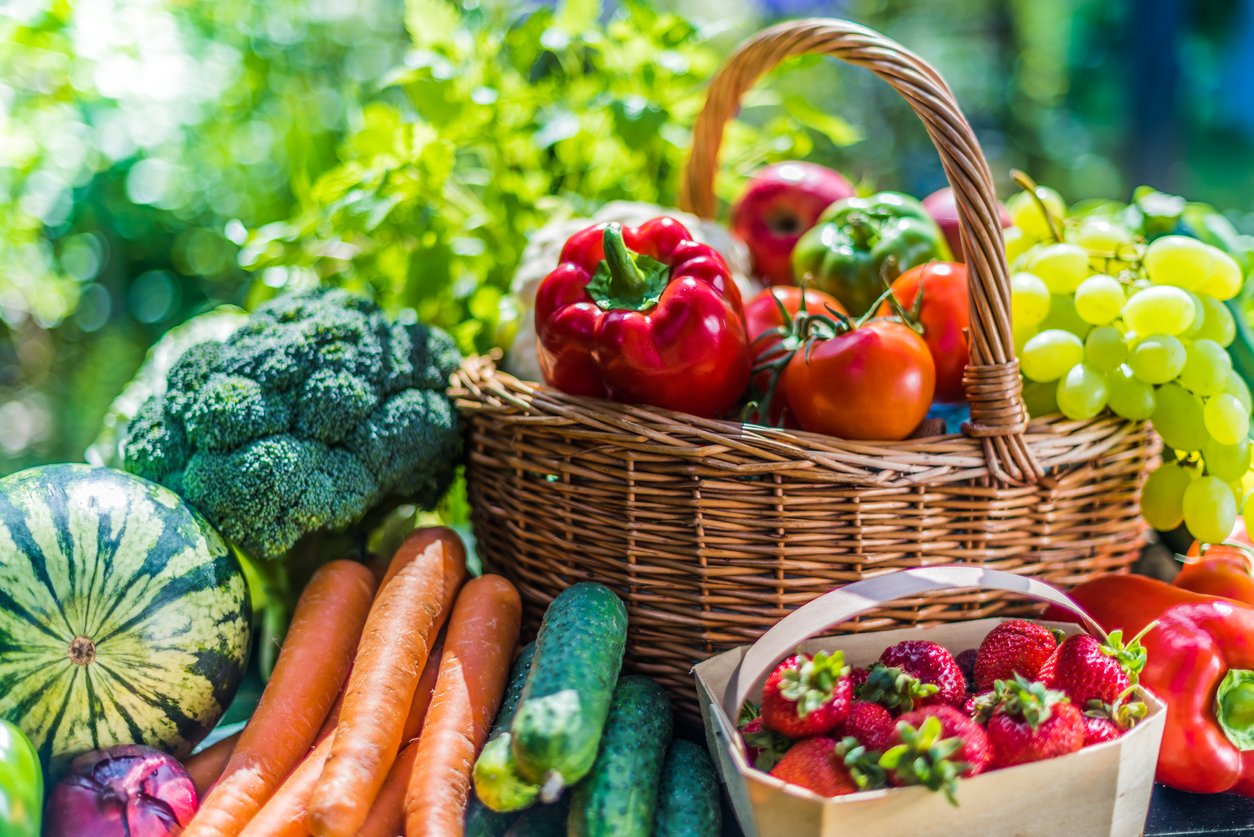
Let’s say you start the day by eating a sleeve of Oreo cookies and wash them down with a quart of rice milk. For lunch, you polish off a can of Pringles and a box of Nutter Butters, along with a 72-ounce soda. At dinnertime, you opt for a balanced meal of Ritz crackers and Twizzlers candy.
Guess what? You’ve had a 100% vegan day!
So yes, vegan diets can be unhealthy. Like most ways of eating, a protocol that eliminates animal products can be as healthy or unhealthy as you want it to be. It’s one of the common mistakes plant-based eaters make causing them to give up because they feel sick — assuming that vegan automatically equals healthy.
While you might not be fooled by Oreos and Twizzlers, there are lots of vegan products that are pretty junky, including some vegan frozen pizzas, burritos, TV dinners, and meat and dairy analogues, that come with a vegan “health halo” that fools consumers into thinking these products are good for them.
How to Eat a Healthy Vegan Diet
What’s also true is that going vegan does not set you up for malnutrition. In fact, both the Academy of Nutrition and Dietetics and the Italian Society of Human Nutrition agree that a well-planned plant-based diet is safe and appropriate for all ages and life stages.
So what does a well-planned plant-based diet look like? One that is based predominantly on plant foods in their whole form as much as possible — fruits, vegetables, grains, legumes, nuts, and seeds. (And I know mushrooms are technically fungi and not plants, but let’s include them as well.) Including these foods means avoiding or minimizing highly processed foods.
Aim for a balance of healthy fats, protein, and complex carbohydrates. They’re all essential macronutrients; the key is to get them from healthy sources and in appropriate amounts. Those healthy sources of macronutrients can include:
- avocados, nuts, seeds, and olives (for fats);
- whole grains, fruits, and vegetables (for carbohydrates); and
- nuts, seeds, soy, beans, lentils, peas, grains, and even some vegetables (for protein).
More and more research is showing that nutritious plant-based/vegan diets are protective against many diseases and poor health outcomes, like heart disease, some types of cancer, type 2 diabetes, and neurodegenerative diseases (including cognitive decline) when compared to modern industrialized diets.
5. Vegan diets are expensive.
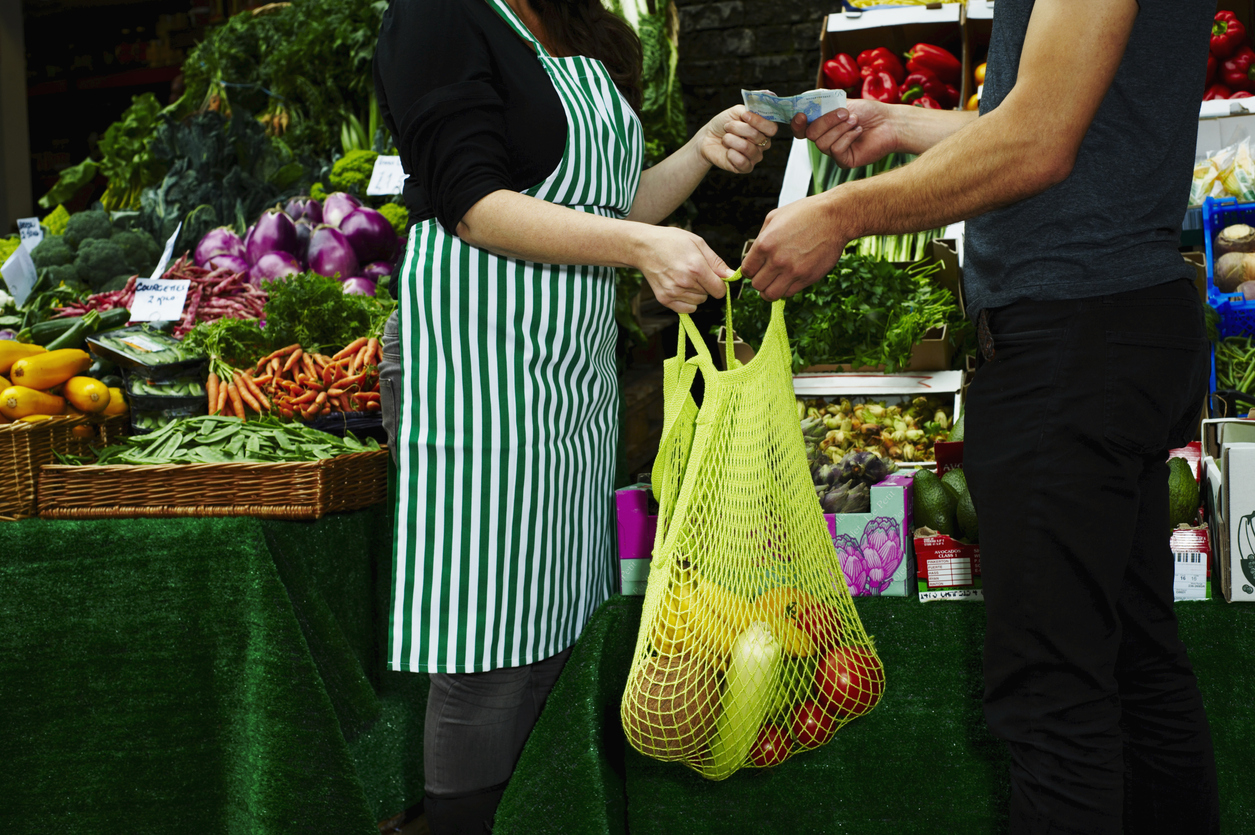
You don’t have to sacrifice health to eat plant-based on a budget. In fact, some of the healthiest vegan foods are also the least costly (especially when compared to organic or grass-fed meat and dairy products). These include legume products such as tofu and tempeh, canned and dried beans, peas, and lentils; veggies such as cabbage, potatoes, tomatoes, onions, garlic, squash, carrots, and leafy greens; and fruits like apples, oranges, bananas, seasonal berries, grapes, peaches, and pears (or, if you live in the tropics, mangoes, jackfruit, and pineapple!).
Focus on Bulk Whole Foods
In addition to buying less expensive plant foods, you can save money in other ways. You can stock up on pantry staples (think grains, dried beans and lentils, and raw nuts and seeds) and frozen foods (such as fruits and vegetables) when they’re on sale. Thrive Market and Nuts.com are two of our favorite online retailers for nonperishable (pantry) foods. And buy produce locally, in season, so you don’t have to subsidize the transportation, refrigeration, and storage costs. You can get some of your produce at a local farmers market, or grow some of your own.
Reduce waste by batch prepping meals that you can eat over multiple days, or freeze extras for later. To avoid impulse shopping and overbuying, shop with a list and meal plan.
Packaged meat, egg, and dairy alternatives tend to be the pricier vegan items, so serve them as occasional treats rather than everyday fare. Not only will you save money, but you’ll then focus your diet on healthier whole foods.
Invest in Your Health
And finally, consider what industries refer to as the “total cost of ownership.” That is, if you buy a well-built appliance, you may pay more upfront, but it will last longer and require fewer repairs than a cheaper model. So over the lifetime of the appliance, you will save a lot of money even though it’s more expensive initially.
In the case of your diet, you are the appliance. If you opt for a healthy vegan diet instead of a fast food or typical industrialized diet, and especially if you eat food that’s grown organically, you might potentially pay more for high-quality produce and dried goods. But by prioritizing your nutrition and health now, you may end up saving on medical bills for the diseases you didn’t get thanks to your healthy lifestyle.
Don’t Believe These Vegan Myths!
There are a lot of good reasons to adopt a predominantly whole foods, plant-based diet. Unfortunately, many people who value their health, the environment, and animal and human welfare give credence to myths that assail the health, safety, and costs of such a diet. Even with the explosion of plant-based products and the normalization of a plant-based lifestyle, some of these myths about plant-based eating continue to deter many people from trying a vegan diet or undermine the positive results they might achieve. The truth is a plant-based diet that incorporates a variety of whole foods and that utilizes a few specific supplements can be a safe, healthy, affordable, and delicious choice.







